Mackintosh-Smith
Visit to download the full and correct content document: https://textbookfull.com/product/arabs-a-3-000-year-history-of-peoples-tribes-and-em pires-tim-mackintosh-smith/

More products digital (pdf, epub, mobi) instant download maybe you interests ...
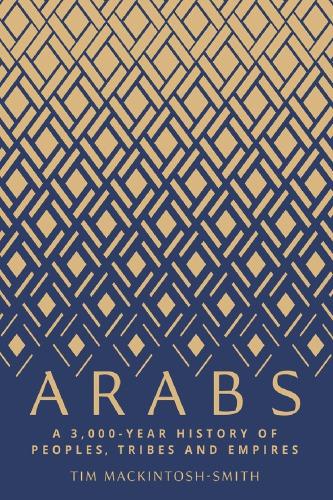
Arabs a 3 000 year history of peoples tribes and empires Mackintosh-Smith
https://textbookfull.com/product/arabs-a-3-000-year-history-ofpeoples-tribes-and-empires-mackintosh-smith/
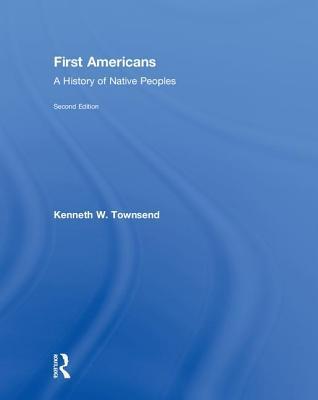
First Americans A History of Native Peoples Combined Volume A History of Native Peoples Powerpoints Kenneth W. Townsend
https://textbookfull.com/product/first-americans-a-history-ofnative-peoples-combined-volume-a-history-of-native-peoplespowerpoints-kenneth-w-townsend/

The Arabs A History 4th Edition Eugene Rogan
https://textbookfull.com/product/the-arabs-a-history-4th-editioneugene-rogan/

A History of Eastern Europe 1740 1918 Empires Nations and Modernisation Ian D. Armour
https://textbookfull.com/product/a-history-of-easterneurope-1740-1918-empires-nations-and-modernisation-ian-d-armour/

The Market Economy Year 11 Economics 2020 Edition Tim Dixon
https://textbookfull.com/product/the-market-economyyear-11-economics-2020-edition-tim-dixon/
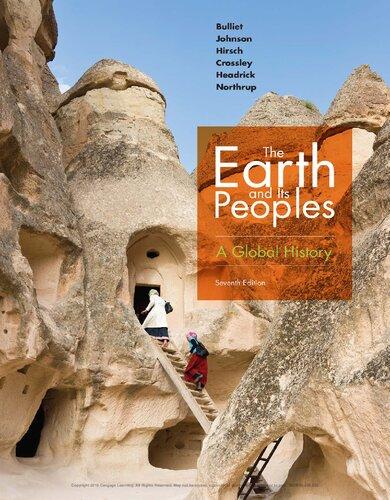
The Earth and Its Peoples: A Global History (7th Ed.)
7th Edition Richard Bulliet
https://textbookfull.com/product/the-earth-and-its-peoples-aglobal-history-7th-ed-7th-edition-richard-bulliet/
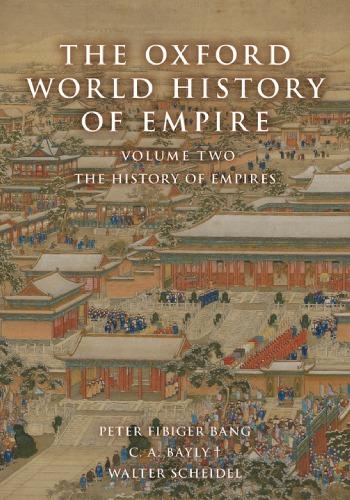
The Oxford World History Of Empire Volume Two: The History Of Empires Peter Fibiger Bang
https://textbookfull.com/product/the-oxford-world-history-ofempire-volume-two-the-history-of-empires-peter-fibiger-bang/
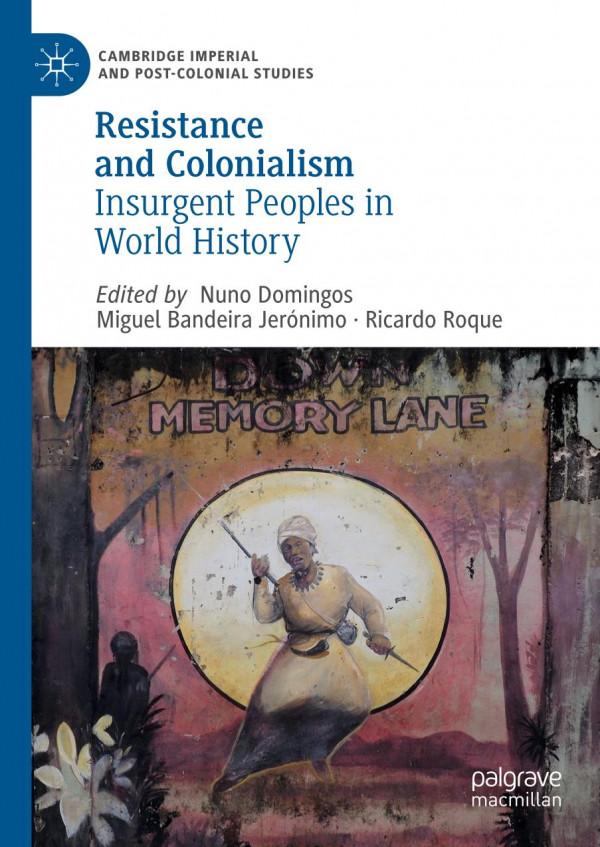
Resistance and Colonialism: Insurgent Peoples in World History Nuno Domingos
https://textbookfull.com/product/resistance-and-colonialisminsurgent-peoples-in-world-history-nuno-domingos/
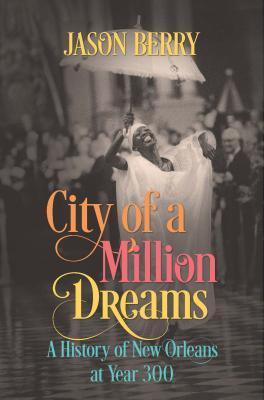
City of a Million Dreams A History of New Orleans at Year 300 Jason Berry
https://textbookfull.com/product/city-of-a-million-dreams-ahistory-of-new-orleans-at-year-300-jason-berry/
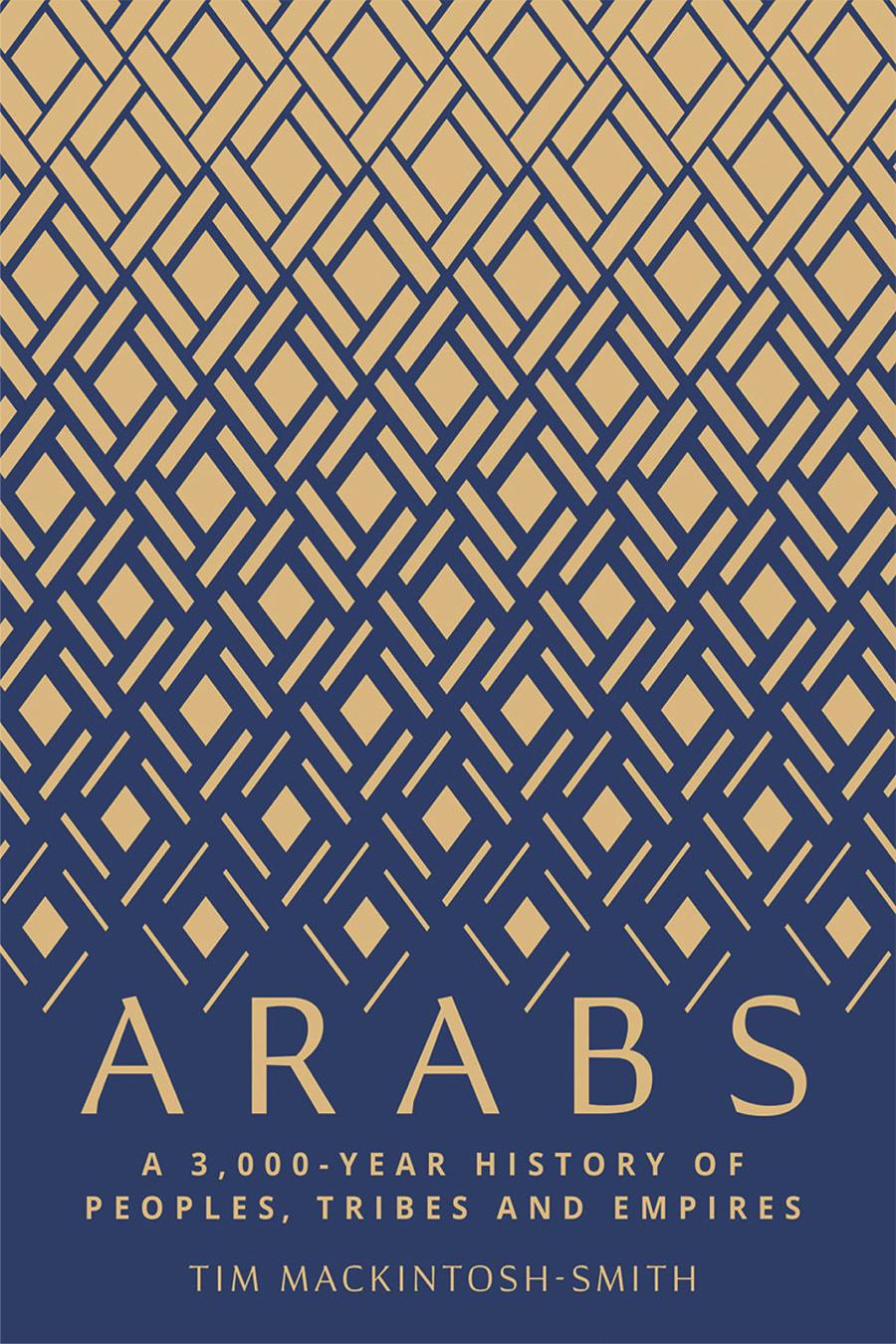
ARABS
OTHER WORKS BY THE AUTHOR
Travel/History
Yemen:TravelsinDictionaryLand(1997)
TravelswithaTangerine:AJourneyintheFootnotesofIbnBattutah (2001)
TheHallofaThousandColumns:HindustantoMalabarwithIbn Battutah(2005)
Landfalls:OntheEdgeofIslamwithIbnBattutah(2010)
Editions/Translations
TheTravelsofIbnBattutah(2002)
TwoArabicTravelBooks(with James E. Montgomery; 2014)
Kitabal-Ifadah(Abd al-Latif al-Baghdadi’s description of Egypt; forthcoming)
Fiction Bloodstone(2017)
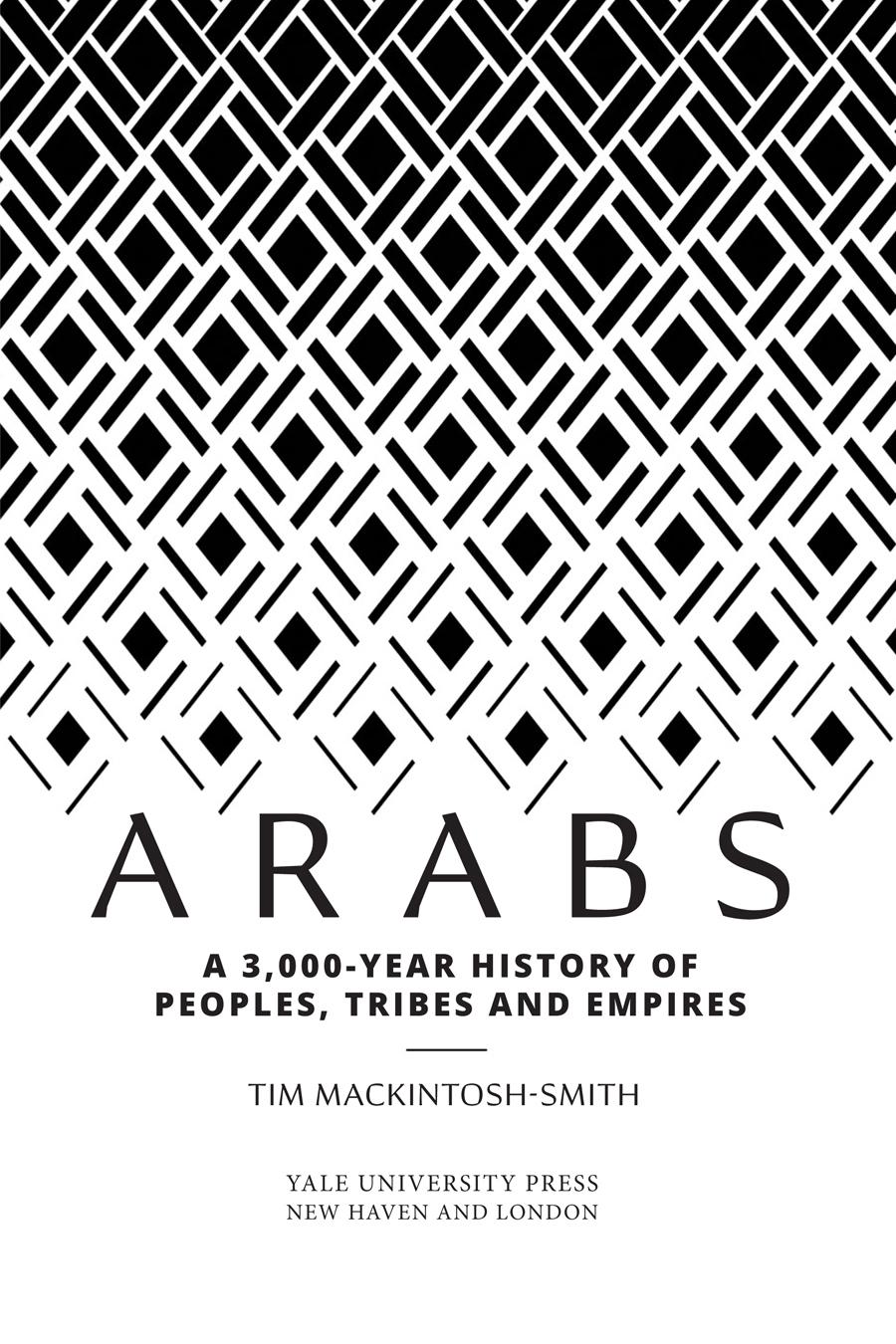
Copyright © 2019 Tim Mackintosh-Smith
All rights reserved. This book may not be reproduced in whole or in part, in any form (beyond that copying permitted by Sections 107 and 108 of the U.S.
Copyright Law and except by reviewers for the public press) without written permission from the publishers.
For information about this and other Yale University Press publications, please contact:
U.S. Office: sales.press@yale.edu yalebooks.com Europe Office: sales@yaleup.co.uk yalebooks.co.uk
Set in Fournier MT by IDSUK (DataConnection) Ltd
Printed in Great Britain by Gomer Press Ltd, Llandysul, Ceredigion, Wales
Library of Congress Control Number: 2018968579
ISBN 978-0-300-18028-2
A catalogue record for this book is available from the British Library.
10 9 8 7 6 5 4 3 2 1
Sha’b: . . . Collection, or union; andalso separation, division, or disunion . . . A nation, people, race, or family ofmankind. . . Edward William Lane, An Arabic-EnglishLexicon
Andifyour Lordhadso willed, He couldsurely have made mankindone community. Butthey willnotcease to disagree. Qur’an 11:118
Thus we hadupwards of1,400separate tribal ‘governments’in the two [Hadhrami]states. There were also severalhundredautonomous towns of unarmedmen . . . Altogether Icalculatedthere were about 2,000separate ‘governments’in the Hadhramaut. Harold Ingrams, Arabia andthe Isles
In memory of a unified Yemen (1990 2014) and of Ali Husayn Ash’ab (1998—2016) and all the others who died with it.

ListofIllustrationsandMaps
Foreword TheWheelandtheHourglass
Introduction Gathering the Word
EMERGENCE: 900 BC–AD
1 Voices from the Wilderness: Earliest Arabs
2 Peoples and Tribes: Sabaeans, Nabataeans and Nomads
3 Scattered Far and Wide: The Changing Grammar of History
4 On the Edge of Greatness: The Days of the Arabs
REVOLUTION: 600–630
5 Revelation, Revolution: Muhammad and the Qur’an
6 God and Caesar: The State of Medina
DOMINANCE: 630–900
7 Crescaders: Openings-Up
8 The Kingdom of Damascus: Umayyad Rule
9 The Empire of Baghdad: Abbasid Sovereignty
DECLINE: 900–1350
10 Counter-Cultures, Counter-Caliphs: The Empire Breaks Up
11 The Genius in the Bottle: The Hordes Close In
ECLIPSE: 1350–1800
12 Masters of the Monsoon: Arabs around the Indian Ocean
RE-EMERGENCE: 1800–NOW
13 Identity Rediscovered: Awakenings
14 The Age of Hope: Nasserism, Ba’thism, Liberation, Oil
15 The Age of Disappointment: Autocrats, Islamocrats, Anacharchs
Afterword IntheStationofHistory
Chronology Notes
Bibliography Index

ILLUSTRATIONS AND MAPS
ILLUSTRATIONS
1 Wadi Rum, Jordan. Daniel Case.
2 A village near al-Tawilah, north-western Yemen. Bernard Gagnon.
3 Gypsum wall panel from Nimrud, Iraq, 728 BC. British Museum 118901 © The Trustees of the British Museum.
4 Part of the southern sluice of the Sabaean dam at Marib, Yemen, sixth century BC. Chris Hellier / Alamy Stock Photo.
5 A South Arabian calcite-alabaster stele commemorating Ha’an ibn Dhu Zu’d, first–third century AD. British Museum 102601 © The Trustees of the British Museum.
6 Muhammad Ali at the Ka’bah, Mecca, 1972. Bettmann / Getty Images.
7 Persian image of the Prophet Muhammad on his ‘night journey’ and ascension to the heavens, early twentieth century. Chris Hellier / Alamy Stock Photo.
8 Qur’an fragment with parts of Chapters 19 and 20, before AD 645.
9 Mosaics from the west side of the courtyard, Umayyad Mosque, Damascus, early eighth century. Heretiq.
10 The Baghdad Gate, al-Raqqah, eighth century. B. O’Kane / Alamy Stock Photo.
11 A gold coin minted by King Offa of Mercia, AD 774. British Museum 1913, 1213.1 © The Trustees of the British Museum.
12 Sultan Qabus of Jurjan’s mortuary skyscraper, Iran, AD 1006. Robert Harding / robertharding.
13 A manuscript miniature from al-Hariri’s Maqamat, AD 1237. World History Archive / Alamy Stock Photo.
14 Marble tombstone commemorating Ali ibn Uthman al-Mursi, Aden, fourteenth or fifteenth century. British Museum 1840, 0302.1 © The Trustees of the British Museum.
15 A panel over the entrance of the Great Mosque, Xi’an, China. Frédéric Araujo / Alamy Stock Photo.
16 Napoleon visiting the Great Pyramid in 1798, nineteenth-century woodcut. World History Archive / Alamy Stock Photo.
17 The procession of the Egyptian mahmal leaving for the Mecca pilgrimage, c. 1917. Royal Collection Trust / © Her Majesty Queen Elizabeth II 2018.
18 King Ibn Sa’ud of Saudi Arabia and US President Franklin D. Roosevelt aboard the USS Quincy, Egypt, 1945.
19 Nasser of Egypt with Nikita Khrushchev of the USSR, 1964. Pictorial Press Ltd / Alamy Stock Photo.
20 Saudi Aramco’s main installation, Dhahran. MyLoupe / Contributor / Getty Images.
21 Mu’ammar al-Qadhdhafi in Belgrade, near the beginning of his rule. Courtesy of Tanja Kragujević.
22 Mu’ammar al-Qadhdhafi in Addis Ababa, 2 February 2009. U.S. Navy.
23 Graffito by Banksy on the Israeli-built separation wall, Palestine, 2012. Nick Fielding / Alamy Stock Photo.
24 A camel-borne hireling of the Mubarak regime scatters antiMubarak protesters in Cairo, February 2011. Mohammed Abou Zaid / Associated Press.
25 Members of the ‘Islamic State’ use sledgehammers on a statue in the Nineveh Museum, Iraq, February 2015. Screengrab from an ‘Islamic State’ video.
26 Fans of Bashshar al-Asad at a rally to support his candidacy in the forthcoming presidential election, Damascus, April 2014. Xinhua / Alamy Stock Photo.
27 Detail of the late thirteenth-century minbarformerly in the Great Mosque, Aleppo. Bernard O’Kane / Alamy Stock Photo.
MAPS
1 The Arabian Peninsula and adjoining regions before Islam.
2 The Arab empire.
3 Arabs abroad.
4 The Arabic world in recent centuries.
FOREWORD

THE WHEEL AND THE HOURGLASS
I did not think that time would ever wear out what was new, or that its changes would divide a people who were one.
Dhu ’l-Rummah
Twenty-seven years ago I began work on my first book, an exploration of the land and history of Yemen, the country in which I was living, and where I still live now. The two former parts of the country had been unified not long before, in May 1990, just ahead of German unification. Walls were coming down, iron curtains parting, and a line in the wilderness was being erased. In Yemen, it was a time of optimism. Admittedly, there was a short war of attempted secession in 1994, in which the former regime in the south shot almost as many Scud missiles at us in San’a as Saddam Husayn had launched at Israel three years earlier; in response, our rulers in the north inflicted a horde of straggle-bearded islamists on Aden who
trashed, interalia, the only brewery in Arabia. But the unified Yemen survived. Bygones, it seemed, became bygones.
That first book of mine was a homage to a land that had held on to much from its past, to its millennial cultural unity. Between the lines, the book was also homage to its renewed political unity. Yemen had been a unified state in earlier periods: in pre-Islamic times, briefly in the fourteenth century, briefly again in the seventeenth. To many Yemenis, as to me, that unity seemed, still seems, to be somehow right and proper, something natural. It seemed right at least as long ago as the fourteenth century: ‘If Yemen were to be united under one ruler,’ wrote an observer in Egypt, ‘its importance would increase and its position among the eminent nations would be strengthened’.
In fact, for more than nine-tenths of its known history, Yemen has not been unified; far from it. Now, as I write, it appears to be falling apart again. So too, seemingly, are Iraq and Libya; Syria may hold together, just, under brute force; Egypt’s integrity looks safe, but its society is deeply riven. These five countries contain half the population of the Arabic-speaking world. According to a recent United Nations report, that ‘world’ is home to 5 per cent of humanity, but generates 58 per cent of the earth’s refugees and 68 per cent of its ‘battle-related deaths’ . . . Sometimes it seems that only one thing unites Arabs, and that is their inability to get along with each other. Why this disunity? Why this extraordinary level of self-harm?
‘The absence of democracy and its institutions,’ Westerners (shorthand but useful) would say. They may have a point; but recent foreign interventions allegedly aiming to promote democracy appear only to have added to the mayhem. And when there arefree and fair elections, the islamists tend to win them; the elections are annulled in a military coup, and the Westerners go strangely silent. Mouths and money do not go together, it seems.
‘The failure of Islam to unify itself,’ the islamists (again, shorthand) would say. But that unity has itself been a mirage almost from the Islamic year dot. Battles over authority and legitimacy have
been fought within the community of Muslims, with words and other weapons, since the fourth decade of the Islamic era.
‘The legacy of imperialism,’ Arab nationalists (there are still a few left) would say. But nearly every attempt at unity in the post-imperial age has failed, usually because of inter-Arab suspicions and squabbles. One Arab commentator, in a post-mortem on the 1948 Arab-Israeli war, wrote that ‘The Arabs would have won the battle for Palestine had there not been something false and rotten in themselves’. That ‘something’ was mutual distrust, resentment and fear. It was the rottenness of bad blood, and it has bubbled up time and again through Arab history.
Of course, disunity is hardly an Arab monopoly. Much of the map of Europe was a crazy paving of statelets well into the modern age. That German reunification of 1990, itself part of a contrary process that fragmented the Soviet Union, was a return to a unity that was then a mere two lifetimes old. During those lifetimes, Europe had been the epicentre of wars that blasted apart the Ottoman and Austro-Hungarian empires and led to the gentler meltdown of the British empire – but out of which came the United Nations and the European Union (those well-known bastions of unanimity). All the world’s a crucible in which once-stable compounds are continually breaking down and new ones forming. If there were no such change, there would be no history. Union and division are part of the same process. Hence the first epigraph to this book, from Lane’s Arabic-EnglishLexicon:
Sha’b: . . . Collection, or union; and also separation, division, or disunion . . . A nation, people, race, or family of mankind . . .
(Things become slightly clearer when we see how this apparent contradiction in terms works: as well as a ‘people’ and all these other things, a sha’b is also a cranial suture, the place where the bones of the skull both meet and are separated; the bones themselves are called qabilahs, otherwise meaning ‘tribes’ . . . It is
as if the human head, with its ‘peoples’ and ‘tribes’, provides an Arabic anatomy of humankind itself.)
And yet the Arabs always seem a special case. Don’t we, and they themselves, usually call them just that – ‘the’ Arabs, as if they were a discrete and clearly identifiable body of people? If they are, then who are they? And why do they seem so particularly fissile, so reactive? Should there not be at least an Arab Union, or even a United Arabian States? . . . Come to think of it, there was a United Arab States (UAS), forgotten by most histories: it was a confederation formed of the United Arab Republic (UAR) – itself a political union of Egypt and Syria in the brief heyday of pan-Arabism – joined by the then Kingdom of North Yemen. The UAS and UAR lasted all of forty-four months, from 1958 to 1961.
There is no reason why political unity should be a good thing per se. But I believe there is a case for claiming that unity in at least a general sense – that of harmony, the absence of strife, peaceful coexistence and cooperation – is better for human society than fragmentation and violent competition. On a small planet with too many people and too few resources, and particularly in crowded countries like Syria, Egypt and Yemen, it seems to hold out the only hope.
Unless we kill each other and start all over again.

Histories of Arabs tend to begin with Islam; perhaps with a prefatory nod to what came before. Islam certainly furnishes an identifiable body of people, unified for a great moment in history. But it was a unity that was apparent, not real. According to traditional accounts, the tribes of Arabia came together in 630–1, the Year of Delegations, when tribal representatives visited the Prophet Muhammad and paid allegiance to him and the state he had founded. Within two years, on the death of Muhammad, most of those tribes had gone back to their old independences and old squabbles. At first the splits were patched up, and the extraordinary conquests that took Arabs out of
Arabia forged among them an esprit de corps that seemed miraculous – indeed, God-given. But the underlying tribal divisions were never healed. Within 300 years united Arab rule was only an elaborately cherished memory, and for the next thousand years or so Arabs, with few exceptions, were themselves divided and ruled by Turks, Persians, Berbers, Europeans and others. Their own empire had been amputated; the pain would subside in time, but the memory of it would remain, like that of a phantom limb.
The historiographical upshot of this is that political histories of Arabs by modern writers nearly always turn, when they reach about AD 900, into histories of Arabic culture, then – while Arabs themselves all but disappear from the picture – morph into histories of other peoples’ empires. Part of the problem is the word ‘Arab’ itself. Like any name, it is not identical with the thing it denotes, but is a label placed on that thing. Labels are useful but confusing. They can cover up a multitude of differences and can hold splits together; they can tell lies. In time, a label fades and gets over-written, while its original meaning – if it ever had just the one – is forgotten. In reality, we are all like old-fashioned travelling trunks, covered with many labels, geographical, genetic, linguistic and so on (interalia, I am British/English/Scottish/Anglo-Saxon/Celtic/European/IndoEuropean/Yemeni/Arabian/Arab(ic) . . .); few sections of humanity are as belabelled as the long-travelled people known as Arabs. But, in the end, most of us get stuck with just one label, and adhere to it, as it does to us. The broader it is, the harder it sticks.
‘Arab’ is a label that is very broad, very sticky (it has been around for almost 3,000 years), and yet very slippery. It has signified different things to different people at different times. The meaning has shape-shifted, expired and resurrected so often that it is misleading to talk about ‘the’ Arabs, and that is why this book does not. To do so would be to try to pin down Proteus. All one can say is that, for more of known history than not, the word has tended to mean tribal groups who live beyond the reach of settled society. That is probably what Arabs were during much of the long period up to Islam; it is certainly what they were throughout most of the second AD millennium. During both periods, there is good reason for
transliterating them as a common noun, in italics, not as a ‘proper’ people: as ’arab, not ‘Arabs’. What is surprising is that those peripheral, mobile, numerically insignificant people – people without a capital letter, let alone a capital city – have been so central to an identity. From Greek city-states in the fifth century BC, through imperial China, to recently colonial Europe, societies have defined and simplified themselves in contradistinction to the nomad, the ‘uncivilized’, the ‘barbarian’. Arabs, however, take not only their name but also their only consistent defining feature, their language, from the epitome of nomadism and footlooseness, those tribal ’arab.
The people we know today as Arabs are an ethnic compound. The two main founding elements, nomadic or semi-nomadic ’arab tribes and settled South Arabian peoples, may both have originated in the Fertile Crescent to the north of Arabia in prehistoric times; their languages descended from the same old ‘Semitic’ family. But over time their tongues had forked and split, and so too had their lifestyles: the South Arabians had developed settled societies based on irrigation systems and agriculture (they may well have inherited these systems from older, indigenous peoples already established in the Arabian south, with whom they intermingled); ’arab, in contrast, practised pastoral transhumance, their wanderings directed by wells, rains and raids. Mutual interests, both commercial and political, meant that these two founding elements began to come together in the centuries before Islam. In early Islamic times, the shared experience of empire-building made the compound more cohesive for a time – but also more complex, as peoples from beyond the Arabian Peninsula were assimilated to the mix. Throughout this long process, tribal ’arabwere part of – indeed, at the heart of – Arabs in the wider sense; they still are, despite their tiny numbers. But they themselves have always complicated Arab history from the inside. For the tensions between the settled and unsettled elements of the compound have generated great strengths, but also fatal instabilities. We will examine these strengths and weaknesses in the coming chapters.
One force above all has brought the compound together, and held it together: language – not everyday speech, but the rich,
strange, subtle, suavely hypnotic, magically persuasive, maddeningly difficult ‘high’ Arabic language that evolved on the tongues of tribal soothsayers and poets – has long, perhaps always, been the catalyst of a larger Arab identity. Shared language is important to any ethnic identity. It is an attempt to reverse the divinely inflicted disunity of Babel, that babble of misunderstanding that prevents people from coming together. For Arabs, it has acted not just as an ethnic marker, but as the ethnic genius: ‘It is said,’ goes an adage that was already old in the ninth century AD, ‘that wisdom descended from the heavens on three organs of the people of the earth: the brains of the Greeks, the hands of the Chinese, and the tongues of the Arabs.’
For this reason, while history is often seen as a succession of men of action, Arab history is as much, or even more, a series of men (and some women) of words – poets, preachers, orators, authors; notably, the author (or, for Muslims, the transmitter) of the first Arabic book, the Qur’an. They and the words they have used will be prominent in this book. They are the ones who have formed identity, forged unity and forced the march of history. From time to time, therefore, for a page or two, we will take stock of how language has impelled progress, and at times impeded it. Progress and regress continue. Recent events, not least the ‘Arab Spring’ and its messy aftermath, have shown how words – slogans, chants, propaganda, mis- and disinformation, the old mesmerizing magic both white and black – still shape the course of the Arab world.
Or, rather, the Arabicworld, the Arabosphere. Language is still its defining feature and its genius, and ‘the Arabs’ are really arabophones. To call everyone from the Strait of Gibraltar to the Strait of Hormuz ‘the Arabs’ would be like calling all North Americans, South Africans, Australasians, Irish and British, regardless of origin, ‘the English’ – or even ‘the Angles’, another group of wandering clans whose language was to end up as the tide-wrack of a long-ebbed empire.

To explore the origins of the shared identity that – despite everything – has led Arabs to chase the mirage of unity, we must therefore listen to their language. We must also go back way beyond Islam. The pre-Islamic past is certainly less well known and much less knowable. But in terms of written history it is as long as the period since that fateful Islamic eruption from Arabia. The first known ancient inscription mentioning Arabs dates from 853 BC; I am writing the first draft of these words in AD 2017; according to tradition, the boy Muhammad was first recognized as a prophet in AD 582 – the precise mid-point between that inscription and now.
Islam began with such a flash that it tends to blind us to what was there before. Equally, the flash has cast its own powerful illumination over all subsequent history, throwing much into shadow. We need to look at the whole historical picture, and in a more even light; to give a stereoscopic view, one that sees what has happened since the Islamic year zero as only half of a panorama that goes back at least as far again.
What did begin with Islam, and gives the impression that a unified Arab narrative begins then too, was Arabic information technology – in other words, new ways to use and control language, and thus to shape identity. Before Islam, literature, culture, history, identity were largely oral. From Islam onwards, new technologies have underlain most of the major developments in Arab history. We will look more closely at them as they crop up over time; for now, a summary will give an idea of just how important they are to the story. In the early seventh century, the first, belated, Arabic book appeared – the Qur’an: overnight, in the terms of our 3,000-year timescale, it made a language and the various people who used it legible, visible. Suddenly they were there on their own page, in black and white. They already had a past; now they entered their historic present, and with an energy that won them a vast empire.
In about 700, a snap decision to ditch the inherited Greek and Persian languages of imperial administration in favour of Arabic also arabicized that whole empire and its peoples with amazing speed: Arabic became the new Latin. In the later eighth century, Arab paper-making stole a long march on a Europe still wrapped up in an
age of parchment, and released an outpouring of Arabic words and ideas. Seven centuries later, with printing, Europe stole its own march; cursive Arabic script never worked happily as moveable type, and typeset Arabic was long viewed in its homeland rather as tinned spaghetti is in Italy. When at long last, in the nineteenth century, Arabic presses did grind slowly into action, so too did an Arab renaissance, the Nahdahor ‘awakening’. Another hundred years on, and a new and thrilling pan-Arab nationalism was broadcast by the border-defying transistor radio. A generation later, Arabic typesetters finally found the antidote to the cursive curse – word-processing; at the same time satellite TV took off, and the words flew further and faster. Most recently, the social media of the early twenty-first century began to subvert old rhetorics and air alternative truths . . . until the reactionaries got on to Facebook too. Now digital dinosaurs do their best to dominate media and minds.
And yet the pre-Islamic half of history had its social media, its dominating voices; words flew then, too. Most of them flew away on the wind. But some were caught – on stones, in memories – and we can and must still try to listen to them.

A distinguished historian who begins in the middle, with Islam, is Albert Hourani. He draws the reader into his subject with a portrait of the great fourteenth-century Arab historian, Ibn Khaldun. After decades lived in the thick of intrigues and warring factions, Ibn Khaldun took himself off to a fortified village in rural Algeria and went into a period of intense intellectual retreat. He looked hard at what was going on around him and, with ‘words and ideas pouring into my head like cream into a churn’ as he put it (lucky man!), came up with a model for the rise and fall of dynasties. In short, the model explains how a nomad tribe can be united by what he calls ’asabiyyah, literally something like ‘bindedness’ but often translated as ‘group solidarity’, and thus gain in military strength. The tribe takes over the rule of a settled state by force, and its leaders
become a new dynasty: the once peripheral and footloose become the central and settled. In time, however – usually three generations – the energy of the dynasty is sapped by easy living, and the dynasty falls to a new one that still enjoys the old nomad vitality. (‘Clogs to clogs,’ as they used to say in Lancashire of a parallel kind of social mobility, ‘is only three generations.’)
Hourani was an academic, a library man writing from the purlieus of St Antony’s College, Oxford. With his academic eye, he viewed Ibn Khaldun as a figure who represented an age and a culture. Rereading both authors in my tower-house in Yemen, I had a realization: here, in the thick of it, kept awake by mortars and missiles (my third major conflict) and bombarded by slogans and sermons and poems – political, not lyrical, poems – all day, I saw Ibn Khaldun as a fellow observer, sitting in his isolated redoubt in Algeria as I sit here in San’a, while tribes and dynasties make war and deals and plots and more war around us, both of us forming our philosophy of history from direct experience. While Hourani used Ibn Khaldun as a literary device, I find myself unintentionally impersonating him. In other words, I am experiencing history insitu. Its detritus lies beneath me, for my little tower stands on the tailend of a ruin-mound built up of bits of pre-Islamic San’a – one of the great cities of Saba, or Sheba – as well as of the Abbasid governor’s palace and God knows what else. In situ, and in real time: the raw materials of history are there, outside my window. (A group of small children has just gone past, shouting ‘Death to America!’ They are accompanied by the rat-tat-tats of drumbeats and firecrackers, and are followed by a red box, born aloft, containing yet another martyr. The box is pitifully small.)
The raw materials these days seem to be mostly steel and lead. Stuck recently with a flat battery and a kind fellow motorist but no jump-leads, we had a simultaneous lateral thought – and stopped a couple of tribesmen. We borrowed their AK47 assault rifles, and used them to join the batteries. The car started first go. Only connect! ‘So they do have positive benefits,’ I said brightly, handing the guns back. ‘Their benefit,’ one of the tribesmen replied, ‘is killing.’
What can one say? In my first book I wrote that, in Yemen, I felt like both the guest at the feast and the fly on the wall. Nowadays I feel more like the skeleton at the feast and the fly in the soup. But one has to try to make light of it. Seeing the land I live in and love falling apart is like watching an old and dear friend losing his mind and committing slow, considered suicide.

I find that Ibn Khaldun’s model, his elegant paradigm, still works. But I believe it can be further tuned in ways that make its workings clearer still, and more clearly applicable over the three millennia or so of recorded Arab history. The most important feature is still ’asabiyyah, that collective potential energy that catalyses a shortlived unity:
’asabiyyah, in time, builds the momentum for . . . a successful raid, conquest or, mutatismutandis, coup d’état; . . . as a result of the raid/conquest/coup, and of the group’s resulting monopoly of resources (camels, taxes, oil and gas), the group prospers;
. . . either the resources are not enough for the group as it increases in size, and/or its leaders fall out over the division of wealth, so . . . unity fragments.
Eventually a new ’asabiyyahwill form, and the process will repeat itself.
I find also that Ibn Khaldun was right to see ‘nomads’ as the reservoir of change, and I believe – strange though it sounds – that in a sense this is still true today, even though the number of Arabs who actually live from nomadism is now infinitesimally small. Ibn Khaldun’s two basic systems of human society are still in place: hadari, or ‘settled’, political society, a (relatively) static system characterized by the related word hadarah – often translated as ‘civilization’, in the sense of people living together in a settlement, a town (Latin civitas, Greek polis); and
badawi, or ‘bedouin’, apolitical society, a dynamic system in which people live beyond the civil polity, and in which the basic ‘institution’ is that of the ghazwor raid (or conquest or coup d’état).
My point is that, while actual Bedouin are now a dying breed, there are still plenty of major players in the Arab game whose actions accord perfectly with that second, ‘bedouin’ system. The two systems, settled ‘peoples’ and bedouin ‘tribes’, are mentioned in a famous verse of the Qur’an, from which I take part of the subtitle of this book:
O mankind, We have created you from male and female, and made you into peoples and tribes, that you may know one another.
The duality has been in place since the beginning of recorded Arab time, and it has not always been a question of opposition. That first mention of Arabs in 853 BC concerns the employment by the Assyrian state of a transport contractor, a certain Gindibu (‘Locust’), an Arab chieftain who owned vast herds of camels: settled and bedouin societies benefited mutually. Moving to the mid-point in Arab history, part of the Prophet Muhammad’s success was due to his combining elements of both the settled and bedouin systems to set up the original Islamic state. In recent times, the almost total failure of the popular democratic revolutions of 2011 has been bound up with a reassertion of the ‘bedouin’ system over the settled. The Yemen I see outside my window, for example, was considered until the summer of 2014 to be a success story of the Arab Spring, of the aspiration to build a settled, civil society. Since then, the northern part of the country has been seized in an armed raid – the resurgence of an old faction that had ruled for a thousand years – a civil war has raged, and the neighbouring states (all ruled by what Ibn Khaldun would class as ‘Bedouin’ dynasties) have weighed in. History, as I said, in real time. Wars are the worst of history, and civil wars are the worst of wars: they are waged not just within, but againstcivil society. Ibn Khaldun had no doubt who the main culprits
were: ‘civilization’, he wrote, ‘always collapsed in places where the Bedouins took over’.
Nowadays, it is not that actual nomads on camels undermine state institutions, hijack democratic uprisings or ignite civil conflict. But it does seem clear that the central nomad institution – the raid, the ghazw– is still very much alive. That, perhaps, is why the image of camel-borne regime loyalists causing mayhem among the Tahrir Square protesters in Cairo in 2011 was so potent. Elsewhere, the latest Toyota pick-ups mounted with heavy-calibre machine-guns are potent enough.
‘Raiding’ is a loaded word, of course; it smacks of the piratical, the barbarian, the uncivilized in its pejorative sense. But raiding is also an established institution, in that it is a long-accepted means for the redistribution, sometimes more equitable, of wealth. The means by which it is pursued may not be regarded as acceptable in some peoples’ ethical systems, but, looked at coldly, they are rational: you have a surplus, I have a deficit, therefore I will take your surplus. It is important to remember that different cultures have different rationalities; even cannibals, as cultural commentators from Montaigne to Marshall Sahlins have explained, have their own rationalities. People may be essentially the same the world over, but they go about being the same in different ways.
For much of Arab history, two rationalities have coexisted, those of the ‘settled’ and of the ‘bedouin’, the peoples and the tribes, seemingly in perpetual duality, clashing yet embracing, loving and hating, yin and yang. But which rationality is the more ‘Arab’? Herein is a great dilemma of Arab identity: the term ‘Arab’, as I have said, has most often been applied to tribal groups who live outside settled society, beyond the pale and the politics of civil institutions. In one sense, therefore, the more Arabs submit to civil society, the less ‘Arab’ they become; they lose something of their ethos. In a globalized, urbanizing world of blurring identities, the prospect of losing that ancient aspect of arabness, of becoming part of the global blur, is painful.

There is more to the story than peoples and tribes. Draw back, look at the bigger picture on the map and over time, and it becomes clear that the cycle of unification and fragmentation sketched out above has been in motion within a context of empires – Assyrian, Roman, Persian, Byzantine, Ottoman, British, American. It is a cycle that has teeth, but is not necessarily vicious: sometimes the teeth have meshed with imperial interests at the points of contact – the two Fertile Crescents (more on them later), Egypt and Iran; at other times they have clashed. In both cases there is friction, heat, conflagration: the cycle is a wheel of fire, both creative and destructive, melding, melting and remoulding Arab identities over 3,000 years.
In telling the Arab story, this book will look more at that seemingly eternal and often tragic round of unity and fragmentation, and also at that force that feeds the fire, fuels revolutions and has, more than anything, defined Arabs across a history of shifting and regrouping identities: the Arabic language. Language is what ties together all those key historical developments based on information technology, from the word of God captured in writing, to wordprocessing, and on to mind-processing by newly reactionary regimes. Language is the thread that all would-be Arab leaders have tried to grasp: their aim has always been to create ’asabiyyah, that ‘bindedness’ or unanimity – to ‘gather the word’ of their peoples and tribes, as Arabic also puts it.
This is a history of Arabs, not of Arabic. But to follow the linguistic thread through it is to explore the deepest strand of ‘being Arab’ in all its different senses. That thread is the only bond that has ever been able to keep Arabs together, to give them identity and unity; even the unity brought about by Islam was based, ultimately, on words. For modern Europeans and their heirs, as Thomas Carlyle pointed out, gunpowder, printing and Protestantism underlay power; for Arabs and theirs, it has been words, rhymes and rhetoric.
The problem is that words can blow apart as well as bring together. That is what is happening now, both where I live and in many other Arab lands, and it is why unity remains a mirage. How all this has come about, over the entire known Arab timescale of nearly three millennia, is the subject of this book.

One last word of my own before the gathering of the Arab word. As well as listening to people and their voices, we will occasionally examine things. What might be called tangibilia are a good way of getting a grasp on the past; they can act as metaphors for time or times, handles on complexity. They can be as big as a whole building assembled from fragments – a mosque that salvages both pagan and Christian materials – or as small as an Arabic coin minted by King Offa in the English Midlands; they can be charged with enigma, like a talisman with Allah on one side and Krishna on the other, or loaded with irony, like a Colt revolver inscribed by a Cold War president of the United States. They are rather like what Jorge Luis Borges, minting a new meaning for an old Arabic coinage, called ‘the Zahir’: a visible and haunting object that takes on different shapes in different places and ages.
Other, more literary metaphors are useful too for the story to come. The wheel of fire is one; the allusion to legendary sufferings –of Ixion, subverter of divine order, of King Lear, tragic divider of his own realm, both of them ‘bound / Upon a wheel of fire’ – is not coincidental. Wheels, moreover, are good vehicles for histories: they travel along an ever-extending line – time – yet their own motion is cyclical; they combine the constant and the variable. But, for Arab history, they are not the only image to keep in mind.
In my first book I wrote that, in Yemen, the past is ever present. I didn’t realize at the time that Harold Ingrams, the imperial administrator and Arabian traveller, had also written in his Yemen book, ‘This is a country where the past is ever present’.
A generation and a revolution or two separated our statements, but the past we wrote about was the same, still present. It is present now, another generation and a few more revolutions on. And it is not only the Yemeni past as seen by British observers that is inescapable. Near the beginning of his sprawling book on Stasis andChange, the Syrian poet and critic Adonis writes of the tendency across the Arabic world ‘to make the past ever present’. This everpresent past was what led that astute observer, Jan Morris, to call the Kingdom of Saudi Arabia ‘an antique autocracy’ in 1955, only two years after its founding autocrat had died.
We must all be stating the blinding obvious. What only becomes obvious with time is how that ever-present past also contains the future – contains in both senses: comprises, but also confines. An ever-present past can have positive effects, for it keeps societies rooted in themselves. Equally, it can entrap those same societies and stifle their futures. It can be an incubus, an undead weight. The recent and obvious example is that of the Arab Spring, the rolling revolution that began in 2011 and gave expression to a younger generation’s aspirations – only to be smothered, almost everywhere, by the reactionary forces of the Arab past.
Exploring Arab history thus means stepping now and again off the time-line; looking ahead as well as back. ‘Time present and time past,’ as Eliot knew,
Are both perhaps present in time future, And time future contained in time past.
This complexity is the bane of all historians, but maybe most of all for historians of Arabs: years and pages turn in sequence; but not necessarily action and reaction, cause and effect. Causes, factors, tragic flaws may remain latent for centuries, even millennia, until they work themselves out, if they ever do. An extreme though trifling instance is one in which, in the mid-twentieth century, a village shaykh (chief) demanded that the British colonial authorities in Aden should pay for an old well to be dug out and reinstated. His argument was that the well had been filled in by a Roman
expeditionary force in 26 BC, and that the Romans and the British were both species of ‘Frank’ – that is, European. A more serious instance is that concerning the transfer and nature of power in the post-Muhammadan state: the problem has boiled up intermittently but bloodily over the past 1,400 years. Clearly, the wheel alone, trundling steadily along its time-line, is not always enough. We need another image, repetitious yet arbitrary.
As often, poets have the answer. The Syrian poet Nizar Qabbani saw the ever-present Arab past as the hourglass that swallows you
Night and day.
That past is the sand in the bottom of the glass, waiting for the next turn of events. Qabbani knew that history is no mere timepiece or pastime, but a player in its own right, often malevolent. It is the hourglass, squatting there, marking time, not measuring it – until it is turned once more, and then you see the grains are human lives, or human deaths, for the people are both the quicksand and its victims.
You can count the grains: 6,660 civilians killed by the war in my adoptive land; at least 50,000 dead combatants, many of them no more than boys; perhaps 85,000 younger children, infants under five, starved quietly to death by war’s old ally, poverty. These are the stark statistics – so far – from the UN, ACLED and Save the Children, as I let go of this book at the end of 2018. Would those who turned the hourglass have done so if they’d known, or even if they could have guessed?
Another random document with no related content on Scribd:
1.C. The Project Gutenberg Literary Archive Foundation (“the Foundation” or PGLAF), owns a compilation copyright in the collection of Project Gutenberg™ electronic works. Nearly all the individual works in the collection are in the public domain in the United States. If an individual work is unprotected by copyright law in the United States and you are located in the United States, we do not claim a right to prevent you from copying, distributing, performing, displaying or creating derivative works based on the work as long as all references to Project Gutenberg are removed. Of course, we hope that you will support the Project Gutenberg™ mission of promoting free access to electronic works by freely sharing Project Gutenberg™ works in compliance with the terms of this agreement for keeping the Project Gutenberg™ name associated with the work. You can easily comply with the terms of this agreement by keeping this work in the same format with its attached full Project Gutenberg™ License when you share it without charge with others.
1.D. The copyright laws of the place where you are located also govern what you can do with this work. Copyright laws in most countries are in a constant state of change. If you are outside the United States, check the laws of your country in addition to the terms of this agreement before downloading, copying, displaying, performing, distributing or creating derivative works based on this work or any other Project Gutenberg™ work. The Foundation makes no representations concerning the copyright status of any work in any country other than the United States.
1.E. Unless you have removed all references to Project Gutenberg:
1.E.1. The following sentence, with active links to, or other immediate access to, the full Project Gutenberg™ License must appear prominently whenever any copy of a Project Gutenberg™ work (any work on which the phrase “Project Gutenberg” appears, or with which the phrase “Project
Gutenberg” is associated) is accessed, displayed, performed, viewed, copied or distributed:
This eBook is for the use of anyone anywhere in the United States and most other parts of the world at no cost and with almost no restrictions whatsoever. You may copy it, give it away or re-use it under the terms of the Project Gutenberg License included with this eBook or online at www.gutenberg.org. If you are not located in the United States, you will have to check the laws of the country where you are located before using this eBook.
1.E.2. If an individual Project Gutenberg™ electronic work is derived from texts not protected by U.S. copyright law (does not contain a notice indicating that it is posted with permission of the copyright holder), the work can be copied and distributed to anyone in the United States without paying any fees or charges. If you are redistributing or providing access to a work with the phrase “Project Gutenberg” associated with or appearing on the work, you must comply either with the requirements of paragraphs 1.E.1 through 1.E.7 or obtain permission for the use of the work and the Project Gutenberg™ trademark as set forth in paragraphs 1.E.8 or 1.E.9.
1.E.3. If an individual Project Gutenberg™ electronic work is posted with the permission of the copyright holder, your use and distribution must comply with both paragraphs 1.E.1 through 1.E.7 and any additional terms imposed by the copyright holder. Additional terms will be linked to the Project Gutenberg™ License for all works posted with the permission of the copyright holder found at the beginning of this work.
1.E.4. Do not unlink or detach or remove the full Project Gutenberg™ License terms from this work, or any files containing a part of this work or any other work associated with Project Gutenberg™.
1.E.5. Do not copy, display, perform, distribute or redistribute this electronic work, or any part of this electronic work, without prominently displaying the sentence set forth in paragraph 1.E.1 with active links or immediate access to the full terms of the Project Gutenberg™ License.
1.E.6. You may convert to and distribute this work in any binary, compressed, marked up, nonproprietary or proprietary form, including any word processing or hypertext form. However, if you provide access to or distribute copies of a Project Gutenberg™ work in a format other than “Plain Vanilla ASCII” or other format used in the official version posted on the official Project Gutenberg™ website (www.gutenberg.org), you must, at no additional cost, fee or expense to the user, provide a copy, a means of exporting a copy, or a means of obtaining a copy upon request, of the work in its original “Plain Vanilla ASCII” or other form. Any alternate format must include the full Project Gutenberg™ License as specified in paragraph 1.E.1.
1.E.7. Do not charge a fee for access to, viewing, displaying, performing, copying or distributing any Project Gutenberg™ works unless you comply with paragraph 1.E.8 or 1.E.9.
1.E.8. You may charge a reasonable fee for copies of or providing access to or distributing Project Gutenberg™ electronic works provided that:
• You pay a royalty fee of 20% of the gross profits you derive from the use of Project Gutenberg™ works calculated using the method you already use to calculate your applicable taxes. The fee is owed to the owner of the Project Gutenberg™ trademark, but he has agreed to donate royalties under this paragraph to the Project Gutenberg Literary Archive Foundation. Royalty payments must be paid within 60 days following each date on which you prepare (or are legally required to prepare) your periodic tax returns. Royalty payments should be clearly marked as such and sent to the Project Gutenberg Literary Archive Foundation at the address specified in Section 4, “Information
about donations to the Project Gutenberg Literary Archive Foundation.”
• You provide a full refund of any money paid by a user who notifies you in writing (or by e-mail) within 30 days of receipt that s/he does not agree to the terms of the full Project Gutenberg™ License. You must require such a user to return or destroy all copies of the works possessed in a physical medium and discontinue all use of and all access to other copies of Project Gutenberg™ works.
• You provide, in accordance with paragraph 1.F.3, a full refund of any money paid for a work or a replacement copy, if a defect in the electronic work is discovered and reported to you within 90 days of receipt of the work.
• You comply with all other terms of this agreement for free distribution of Project Gutenberg™ works.
1.E.9. If you wish to charge a fee or distribute a Project Gutenberg™ electronic work or group of works on different terms than are set forth in this agreement, you must obtain permission in writing from the Project Gutenberg Literary Archive Foundation, the manager of the Project Gutenberg™ trademark. Contact the Foundation as set forth in Section 3 below.
1.F.
1.F.1. Project Gutenberg volunteers and employees expend considerable effort to identify, do copyright research on, transcribe and proofread works not protected by U.S. copyright law in creating the Project Gutenberg™ collection. Despite these efforts, Project Gutenberg™ electronic works, and the medium on which they may be stored, may contain “Defects,” such as, but not limited to, incomplete, inaccurate or corrupt data, transcription errors, a copyright or other intellectual property infringement, a defective or damaged disk or other
medium, a computer virus, or computer codes that damage or cannot be read by your equipment.
1.F.2. LIMITED WARRANTY, DISCLAIMER OF DAMAGESExcept for the “Right of Replacement or Refund” described in paragraph 1.F.3, the Project Gutenberg Literary Archive Foundation, the owner of the Project Gutenberg™ trademark, and any other party distributing a Project Gutenberg™ electronic work under this agreement, disclaim all liability to you for damages, costs and expenses, including legal fees. YOU AGREE THAT YOU HAVE NO REMEDIES FOR NEGLIGENCE, STRICT LIABILITY, BREACH OF WARRANTY OR BREACH OF CONTRACT EXCEPT THOSE PROVIDED IN PARAGRAPH
1.F.3. YOU AGREE THAT THE FOUNDATION, THE TRADEMARK OWNER, AND ANY DISTRIBUTOR UNDER THIS AGREEMENT WILL NOT BE LIABLE TO YOU FOR ACTUAL, DIRECT, INDIRECT, CONSEQUENTIAL, PUNITIVE OR INCIDENTAL DAMAGES EVEN IF YOU GIVE NOTICE OF THE POSSIBILITY OF SUCH DAMAGE.
1.F.3. LIMITED RIGHT OF REPLACEMENT OR REFUND - If you discover a defect in this electronic work within 90 days of receiving it, you can receive a refund of the money (if any) you paid for it by sending a written explanation to the person you received the work from. If you received the work on a physical medium, you must return the medium with your written explanation. The person or entity that provided you with the defective work may elect to provide a replacement copy in lieu of a refund. If you received the work electronically, the person or entity providing it to you may choose to give you a second opportunity to receive the work electronically in lieu of a refund. If the second copy is also defective, you may demand a refund in writing without further opportunities to fix the problem.
1.F.4. Except for the limited right of replacement or refund set forth in paragraph 1.F.3, this work is provided to you ‘AS-IS’, WITH NO OTHER WARRANTIES OF ANY KIND, EXPRESS
OR IMPLIED, INCLUDING BUT NOT LIMITED TO WARRANTIES OF MERCHANTABILITY OR FITNESS FOR ANY PURPOSE.
1.F.5. Some states do not allow disclaimers of certain implied warranties or the exclusion or limitation of certain types of damages. If any disclaimer or limitation set forth in this agreement violates the law of the state applicable to this agreement, the agreement shall be interpreted to make the maximum disclaimer or limitation permitted by the applicable state law. The invalidity or unenforceability of any provision of this agreement shall not void the remaining provisions.
1.F.6. INDEMNITY - You agree to indemnify and hold the Foundation, the trademark owner, any agent or employee of the Foundation, anyone providing copies of Project Gutenberg™ electronic works in accordance with this agreement, and any volunteers associated with the production, promotion and distribution of Project Gutenberg™ electronic works, harmless from all liability, costs and expenses, including legal fees, that arise directly or indirectly from any of the following which you do or cause to occur: (a) distribution of this or any Project Gutenberg™ work, (b) alteration, modification, or additions or deletions to any Project Gutenberg™ work, and (c) any Defect you cause.
Section 2. Information about the Mission of Project Gutenberg™
Project Gutenberg™ is synonymous with the free distribution of electronic works in formats readable by the widest variety of computers including obsolete, old, middle-aged and new computers. It exists because of the efforts of hundreds of volunteers and donations from people in all walks of life.
Volunteers and financial support to provide volunteers with the assistance they need are critical to reaching Project
Gutenberg™’s goals and ensuring that the Project Gutenberg™ collection will remain freely available for generations to come. In 2001, the Project Gutenberg Literary Archive Foundation was created to provide a secure and permanent future for Project Gutenberg™ and future generations. To learn more about the Project Gutenberg Literary Archive Foundation and how your efforts and donations can help, see Sections 3 and 4 and the Foundation information page at www.gutenberg.org.
Section 3. Information about the Project Gutenberg Literary Archive Foundation
The Project Gutenberg Literary Archive Foundation is a nonprofit 501(c)(3) educational corporation organized under the laws of the state of Mississippi and granted tax exempt status by the Internal Revenue Service. The Foundation’s EIN or federal tax identification number is 64-6221541. Contributions to the Project Gutenberg Literary Archive Foundation are tax deductible to the full extent permitted by U.S. federal laws and your state’s laws.
The Foundation’s business office is located at 809 North 1500 West, Salt Lake City, UT 84116, (801) 596-1887. Email contact links and up to date contact information can be found at the Foundation’s website and official page at www.gutenberg.org/contact
Section 4. Information about Donations to the Project Gutenberg Literary Archive Foundation
Project Gutenberg™ depends upon and cannot survive without widespread public support and donations to carry out its mission of increasing the number of public domain and licensed works that can be freely distributed in machine-readable form
accessible by the widest array of equipment including outdated equipment. Many small donations ($1 to $5,000) are particularly important to maintaining tax exempt status with the IRS.
The Foundation is committed to complying with the laws regulating charities and charitable donations in all 50 states of the United States. Compliance requirements are not uniform and it takes a considerable effort, much paperwork and many fees to meet and keep up with these requirements. We do not solicit donations in locations where we have not received written confirmation of compliance. To SEND DONATIONS or determine the status of compliance for any particular state visit www.gutenberg.org/donate.
While we cannot and do not solicit contributions from states where we have not met the solicitation requirements, we know of no prohibition against accepting unsolicited donations from donors in such states who approach us with offers to donate.
International donations are gratefully accepted, but we cannot make any statements concerning tax treatment of donations received from outside the United States. U.S. laws alone swamp our small staff.
Please check the Project Gutenberg web pages for current donation methods and addresses. Donations are accepted in a number of other ways including checks, online payments and credit card donations. To donate, please visit: www.gutenberg.org/donate.
Section 5. General Information About Project Gutenberg™ electronic works
Professor Michael S. Hart was the originator of the Project Gutenberg™ concept of a library of electronic works that could be freely shared with anyone. For forty years, he produced and
distributed Project Gutenberg™ eBooks with only a loose network of volunteer support.
Project Gutenberg™ eBooks are often created from several printed editions, all of which are confirmed as not protected by copyright in the U.S. unless a copyright notice is included. Thus, we do not necessarily keep eBooks in compliance with any particular paper edition.
Most people start at our website which has the main PG search facility: www.gutenberg.org.
This website includes information about Project Gutenberg™, including how to make donations to the Project Gutenberg Literary Archive Foundation, how to help produce our new eBooks, and how to subscribe to our email newsletter to hear about new eBooks.
